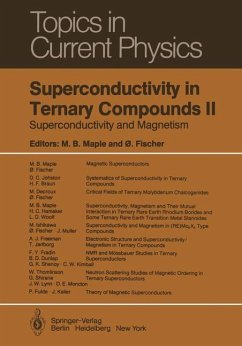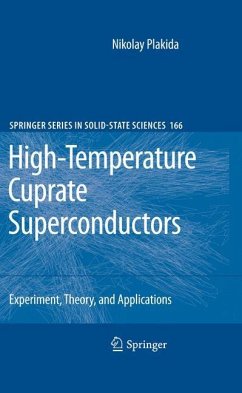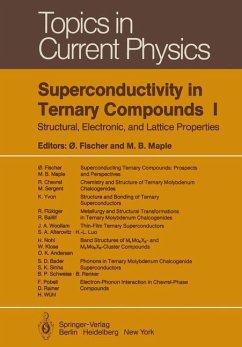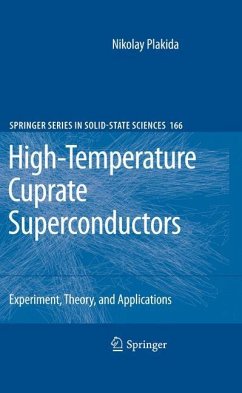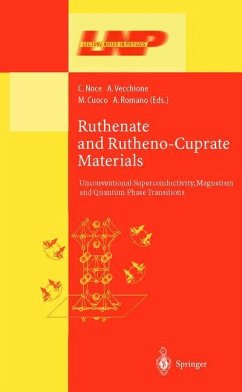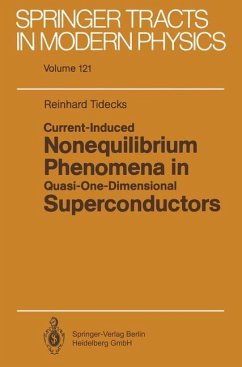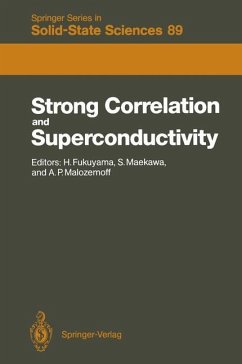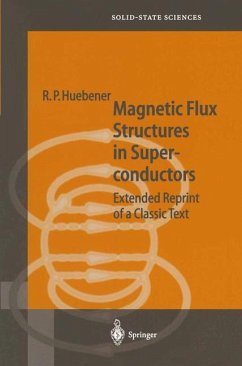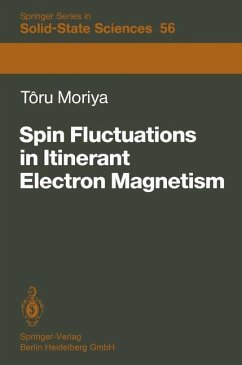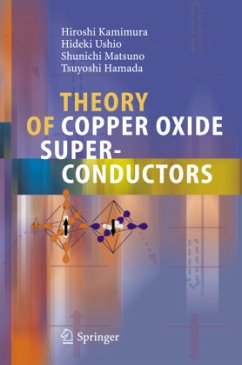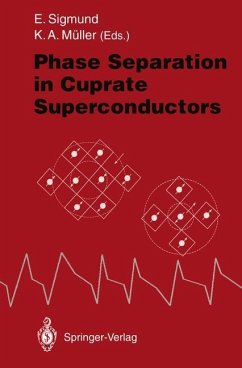
Phase Separation in Cuprate Superconductors
Proceedings of the second international workshop on "Phase Separation in Cuprate Superconductors" September 4 - 10, 1993, Cottbus, Germany
Herausgegeben: Sigmund, Ernst; Müller, K.Alex

PAYBACK Punkte
38 °P sammeln!
Phase separation has become a fascinating subject in the discussion of cuprate superconductors. All these materials have layered structures containing CU02 planes as the most important building blocks. They are coupled only weakly so that the electronic properties show a nearly two-dimensional behaviour. Due to correlations the undoped compounds are insulators of the Mott Hubbard type exhibiting long-range antiferromagnetic order. Upon doping a rich scenario of physical phenomena appears: Even at low hole concentra tions the antiferromagnetic ordering temperature is reduced drastically and spi...
Phase separation has become a fascinating subject in the discussion of cuprate superconductors. All these materials have layered structures containing CU02 planes as the most important building blocks. They are coupled only weakly so that the electronic properties show a nearly two-dimensional behaviour. Due to correlations the undoped compounds are insulators of the Mott Hubbard type exhibiting long-range antiferromagnetic order. Upon doping a rich scenario of physical phenomena appears: Even at low hole concentra tions the antiferromagnetic ordering temperature is reduced drastically and spin-glass behaviour as well as a hopping type conductivity can be observed. Further doping leads to metallic-like conductivity and below Tc to super conductivity. In this doping regime antiferromagnetic fluctuations are still observed. At very high charge carrier densities superconductivity is lost and the systems show pure metallic conduction without ,magnetic correlations. One of the most interesting phenomena in high-T c research is the interplay between magnetism and conductivity or superconductivity. Especially the behaviour of charge carriers in the antiferromagnetic background raises a number of open questions. Two scenarios become possible: the carriers tend to delocalize over the whole crystal forming a homogeneous state with band-like structure or they separate into hole-rich (conducting, superconducting) and hole-poor (insulating, antiferromagnetic) phases leading to an inhomogeneous structure.



